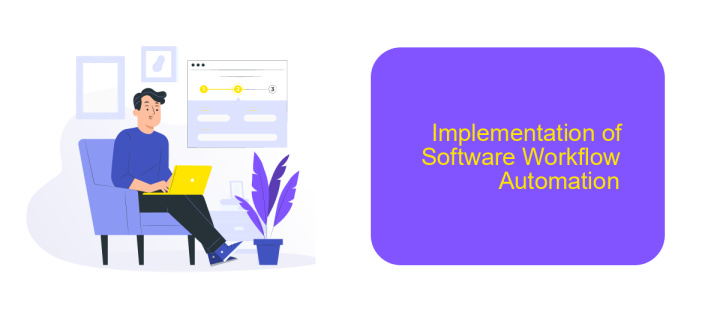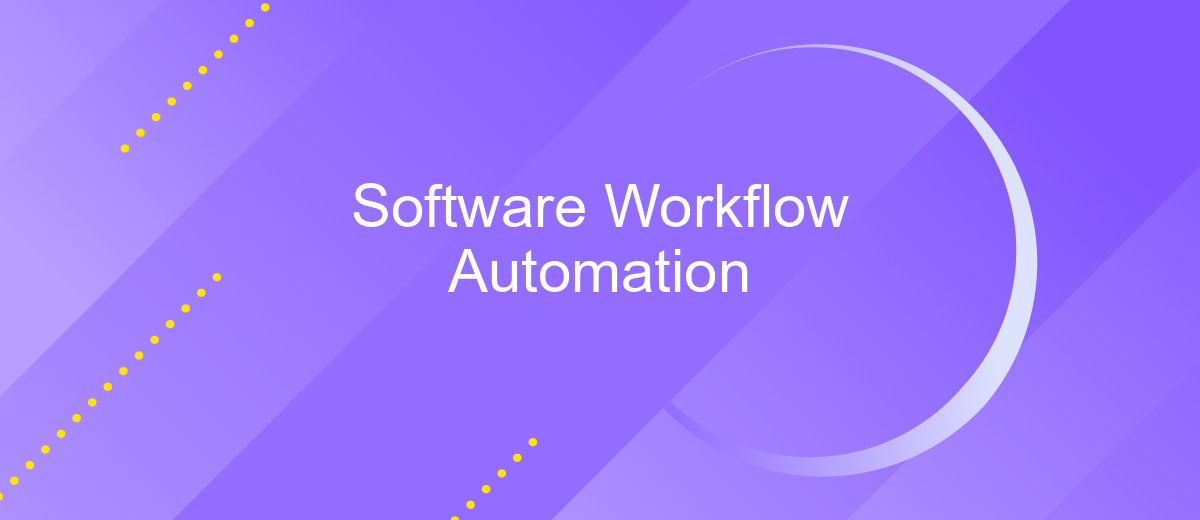Software Workflow Automation
In today's fast-paced digital landscape, software workflow automation has become a crucial tool for enhancing productivity and efficiency. By streamlining repetitive tasks and integrating various software applications, businesses can save time, reduce errors, and focus on more strategic activities. This article explores the benefits, key features, and implementation strategies of software workflow automation to help organizations stay competitive and agile.
Introduction
Software Workflow Automation has become an essential component in modern business operations. By automating repetitive tasks, organizations can enhance efficiency, reduce human error, and free up valuable time for more strategic activities. This evolution is driven by the need to stay competitive in a fast-paced digital landscape.
- Improved efficiency and productivity
- Reduced operational costs
- Minimized human errors
- Enhanced compliance and reporting
- Better resource allocation
One of the key aspects of workflow automation is the seamless integration of various software tools and services. Platforms like ApiX-Drive simplify this process by enabling businesses to connect different applications without the need for extensive coding knowledge. This not only accelerates the implementation of automated workflows but also ensures that all systems work harmoniously together, providing a robust foundation for business growth.
Understanding Software Workflow Automation

Software workflow automation involves the use of technology to streamline and automate complex business processes and tasks. By automating repetitive and time-consuming activities, organizations can enhance efficiency, reduce errors, and free up valuable human resources for more strategic work. Automation tools can handle various functions, such as data entry, task assignments, and notifications, ensuring that workflows are consistent and reliable.
One key aspect of software workflow automation is the integration of different applications and systems. Tools like ApiX-Drive facilitate seamless integrations, allowing businesses to connect disparate software solutions without extensive coding knowledge. This integration capability ensures that data flows smoothly between systems, enabling real-time updates and improved collaboration. By leveraging services like ApiX-Drive, organizations can tailor their workflows to meet specific needs, ultimately driving productivity and operational excellence.
Benefits of Software Workflow Automation

Software workflow automation offers numerous advantages for businesses of all sizes. By automating repetitive tasks, companies can significantly reduce the time and effort required to complete various processes, leading to increased efficiency and productivity. Furthermore, automation minimizes the risk of human error, ensuring that workflows are executed consistently and accurately.
- Increased Efficiency: Automation speeds up processes by eliminating manual tasks.
- Cost Savings: Reducing the need for manual labor leads to lower operational costs.
- Consistency: Automated workflows ensure tasks are performed uniformly every time.
- Scalability: Automation allows businesses to handle larger volumes of work without additional resources.
- Improved Compliance: Automated processes can help ensure adherence to regulatory requirements.
Integrating various software applications is another key benefit of workflow automation. Tools like ApiX-Drive facilitate seamless integration between different systems, enabling data to flow effortlessly across platforms. This not only enhances operational efficiency but also provides valuable insights through unified data analytics. As a result, businesses can make more informed decisions and respond more quickly to market changes.
Implementation of Software Workflow Automation

Implementing software workflow automation involves a systematic approach to streamline and optimize business processes. The first step is to identify repetitive tasks and processes that can be automated. This requires a thorough analysis of current workflows to pinpoint inefficiencies and areas for improvement.
Once the target processes are identified, the next step is to select the appropriate tools and technologies for automation. Tools like ApiX-Drive can be particularly useful for integrating various software applications and automating data transfer between them. ApiX-Drive allows for seamless integration without the need for extensive coding, making it accessible for businesses of all sizes.
- Identify repetitive tasks and processes
- Analyze current workflows for inefficiencies
- Select appropriate automation tools
- Implement and monitor automated workflows
After the implementation, it is crucial to continuously monitor and evaluate the automated workflows to ensure they are functioning as intended. Regular updates and adjustments may be necessary to adapt to changing business needs and to further optimize the processes. Effective implementation of software workflow automation can lead to significant time savings and improved operational efficiency.


Case Studies and Best Practices
One notable case study involves a mid-sized e-commerce company that significantly improved its order processing efficiency through workflow automation. By integrating their existing systems with ApiX-Drive, they managed to automate data transfer between their online store, CRM, and inventory management software. This seamless integration reduced manual data entry errors and accelerated order fulfillment, resulting in a 30% increase in customer satisfaction and a 20% boost in sales within six months.
Another best practice example comes from a marketing agency that automated their client onboarding process. By leveraging workflow automation tools, they connected their lead generation forms, email marketing platform, and project management software. ApiX-Drive played a crucial role in syncing data across these applications, enabling real-time updates and task assignments. This streamlined approach not only saved valuable time but also enhanced team collaboration and client communication, ultimately leading to a 25% increase in project delivery speed.
FAQ
What is software workflow automation?
How can workflow automation benefit my business?
What types of tasks can be automated in a workflow?
How do I get started with workflow automation?
What tools are available for implementing workflow automation?
Do you want to achieve your goals in business, career and life faster and better? Do it with ApiX-Drive – a tool that will remove a significant part of the routine from workflows and free up additional time to achieve your goals. Test the capabilities of Apix-Drive for free – see for yourself the effectiveness of the tool.

